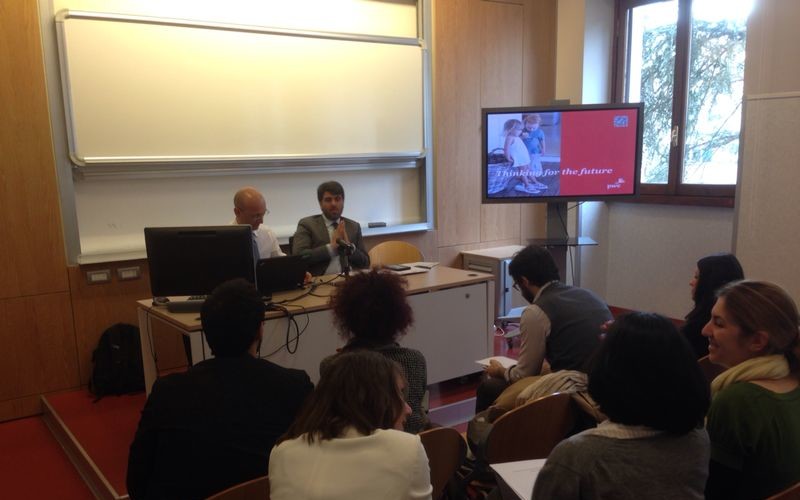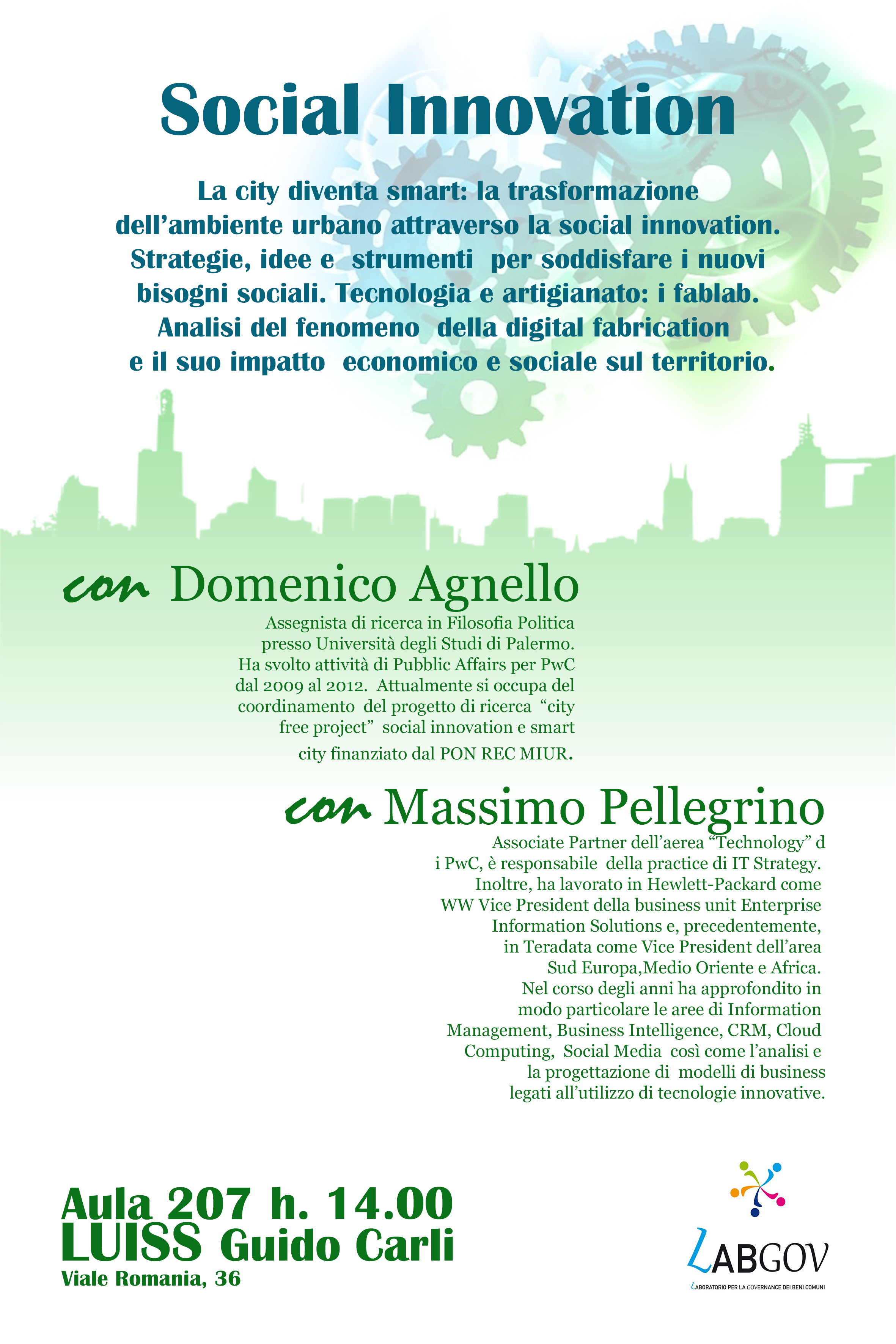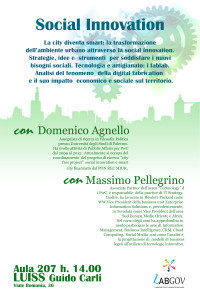
Smart City and Social Innovation
 MEETING MINUTES 4TH APRIL 2014
MEETING MINUTES 4TH APRIL 2014
On the 4th of April 2014 LabGov hosted a meeting about Social Innovation with Massimo Pellegrino (PriceWaterhouseCoopers’ partner) and Domenico Agnello (Temporary Reasearch Associate of University of Palermo).
Domenico Agnello focused on the theoretical framework that lies behind the idea of “Smart City”, that can be seen both as a eco-social transformation tool binded to the new technologies and the reorganization of the capital (with no negative affection) over new processes. Usually a prescriptive vision is used to describe a modern situation that is always changing.
The first concept of “Smart City” was the Renaissance city, because the university was connected with the city, but nowadays it creates some issues regarding the participation of the citizens, due mostly to the fact that not all of them, mostly on the suburbs area, can benefit equally from the opportunities given by a “Smart City”. Other problems might derive from the difficulties regarding the maintenance of a network of participation and the modification of the language used by the population: a “social” language prevents a pedagogical function about the “Smart City” issue. A way to overcome this problem could be betting more on the social networks in order to create a smart and pedagogical society.
Several authors discussed such arguments, like Moses; his idea can be divided into “Moses I” and “Moses II”.
• MOSES I: architectural planning based on a common sentiment: modern and similar to the Enlightment idea, a Roosveltian planning.
• MOSES II: his planning lost some of its previous “social relation”: keywords are modernism and self-referring progressivism.
Another possible solution could be a limited democratic individualism. The problem lies in the fact that in the modern society every project must be “super-performing” since the beginning, and a smart project got some difficulties to be immediately performing.
Massimo Pellegrino focused on the new technologies that might be used in a “Smart City” and how new technologies affected the perception of the passage of time. He explained the theory, developed in the United States, called “Transhumanism” by Ray Carlswell: the speed of the sequence of changing of technologies can be expressed by the theory of accelerated exponential returns. This changes also affects people’s mind.
So what can be done for the “Smart Cities”? Since it is impossible to plan something in a deterministic way due to the fact that society is continuously changing, the only thing logic to do is to try to orient the population, by creating projects that can adjust to the modern society:
• It is important to define the service models, and this includes define a specific goal, the security standards and identify all the relevant stakeholders.
• Analyze all the possible solutions by also studying all the relevant research made by others.
• Prioritize.
• Fund raising.
• Predict the impacts of what your project will have.
• Create a functional Road Map, a project plan.


 On April 04th 2014, at Luiss – Guido Carli, Viale Romania, 32: Meeting with Domenico Agnello and Massimo Pellegrino
On April 04th 2014, at Luiss – Guido Carli, Viale Romania, 32: Meeting with Domenico Agnello and Massimo Pellegrino